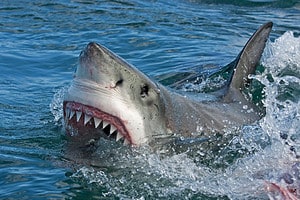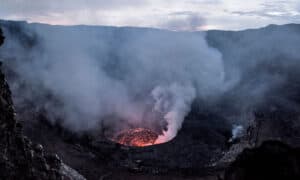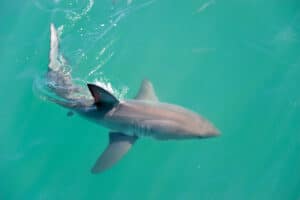A massive adult male great white shark (Carcharodon carcharias) has shown up multiple times in recent weeks off the North and South Carolina coasts.
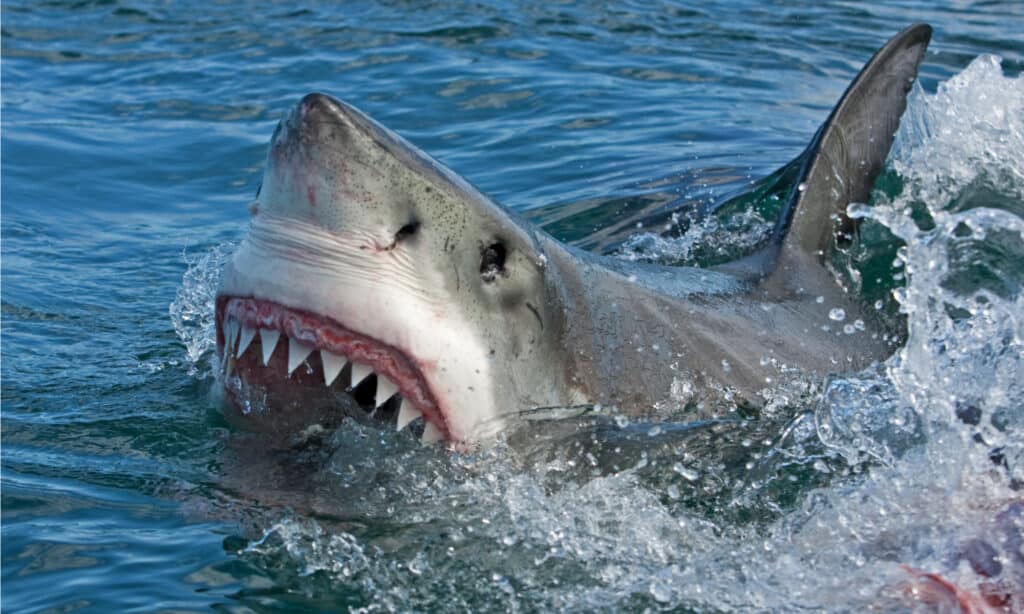
A large great white shark seems to enjoy hanging around the Carolinas lately.
©Martin Prochazkacz/Shutterstock.com
Breton
The shark’s name is Breton. SeaWorld, in conjunction with OCEARCH, a global nonprofit organization that studies and works to preserve these apex predators, chose its name. The shark’s name was chosen in honor of the people of Cape Breton where it was tagged.
Breton was tagged by OCEARCH on September 12, 2020, off the coast of Scatarie Island, Nova Scotia. This male was the first shark to be tagged during OCEARCH’s Expedition Nova Scotia 2020.
At his tagging, Breton was already a giant, measuring 13 feet 3 inches and weighing 1,437 pounds. Today, nearly two and a half years later, the shark is almost certainly over 1,500 pounds.

Breton was tagged in Cape Breton, Nova Scotia
©iStock.com/lightphoto
Recording Breton’s Data
OCEARCH records ping data to track the sharks that it tags. To allow its geolocation, the tagged shark must break the surface of the water and cruise at the surface for a minimum of 90 seconds. Thus, OCEARCH can record three pings to pinpoint the shark’s precise location.
The organization also records Z-pings, which occur when a shark swims to the water’s surface but doesn’t remain there long enough for the three pings that would reveal its specific location.
The Coast of the Carolinas
Breton’s latest pings reveal that he is swimming off the coast of the Carolinas. On January 25, 2023, OCEARCH recorded multiple pings for Breton close to the coast of Myrtle Beach, South Carolina.
Then, they received pings the next two days, January 26 and 27. This time, Breton was off the coast of Bald Head Island, North Carolina.
Even more recently, OCEARCH received a Z-ping from Breton’s transmitter. The Z-ping was received on February 16, 2023. While it didn’t provide his location, that Z-ping does tell us that Breton is still surfacing off the U.S. Atlantic coast.
The sharks that OCEARCH don’t always show this kind of ping activity. Sometimes weeks or even months go by with no data received from a shark’s tag. We don’t know what had Breton so active near the water’s surface of the Carolinas recently, but he has certainly provided researchers with a lot of data. Apparently, he is quite a fan of the Carolina coastal waters. But that doesn’t mean he never goes anywhere else. Quite the contrary.
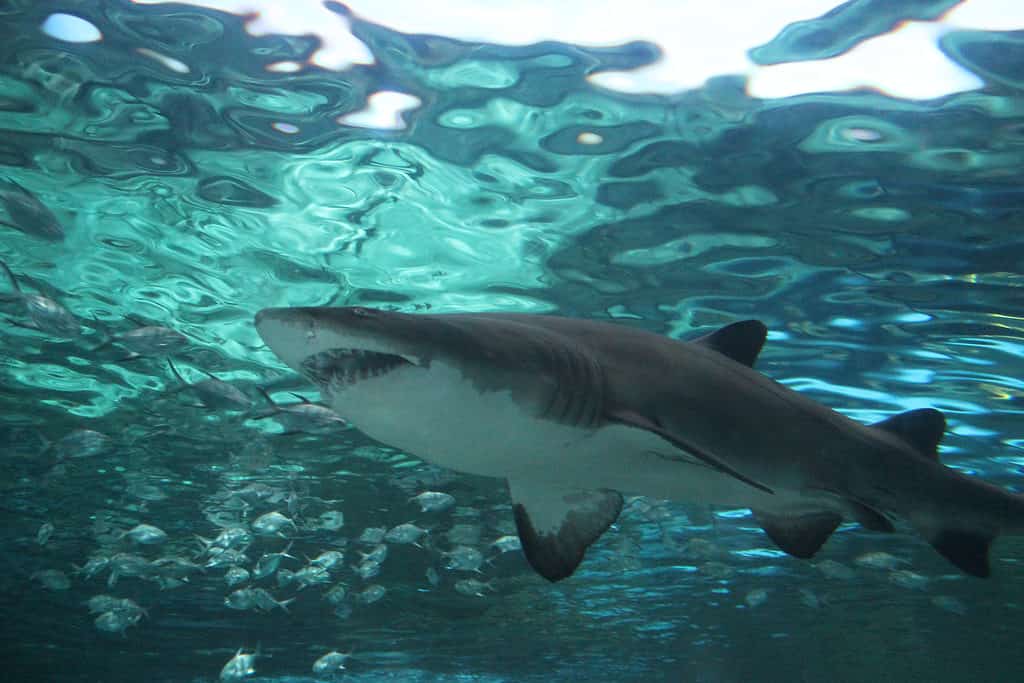
This great white shark was photographed at Myrtle Beach, South Carolina.
©Two Edged Studios LLC/Shutterstock.com
Breton’s Travels
Since his initial tagging, Breton has been a prolific traveler up and down the eastern seaboard of Canada and the United States.
Breton’s northernmost ping was in the Honguedo Strait off Quebec’s Anticosti Island coast. His most southern ping was off the Turks and Caicos Islands south of the Bahamas.
All told, Breton has covered a whopping 26,114 miles of Atlantic water since his tagging in September 2020. And, given recent data, he’s not slowing down anytime soon.
What is the Largest Shark Ever Photographed?
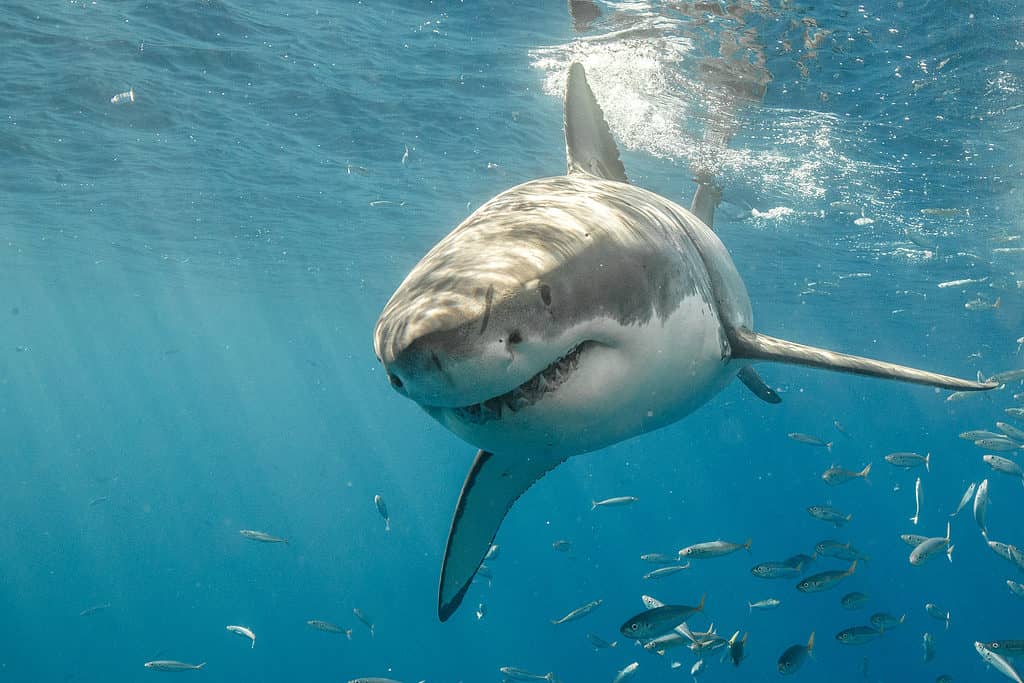
Deep Blue is believed to be one of the largest sharks ever recorded, with a size larger than most, if not all great whites, including the one shown here.
©iStock.com/ShaneMyersPhoto
The largest shark ever photographed was first spotted in Mexico by researcher Mauricio Hoyos Padilla near the Guadalupe Islands. Believed to be one of the biggest ever recorded in history, it is a female great white shark named Deep Blue, with an estimated length of around 20 feet long, possibly even larger, and thought to weigh around 4,400 pounds. Deep Blue is thought to be over 50 years old.
This massive great white shark has been featured numerous times on the Discovery Channel’s Shark Week and even has her own Twitter account, @Deep_Blue_Shark. She is believed to be a non-aggressive, perhaps even friendly, shark who has allowed numerous people, from scuba divers to free divers, to swim near her. There are many accounts of people swimming in her presence with no problems and even a video showing her approaching a diver with no issues.
The photo featured at the top of this post is © iStock.com/ELizabethHoffmann
Thank you for reading! Have some feedback for us? Contact the AZ Animals editorial team.




